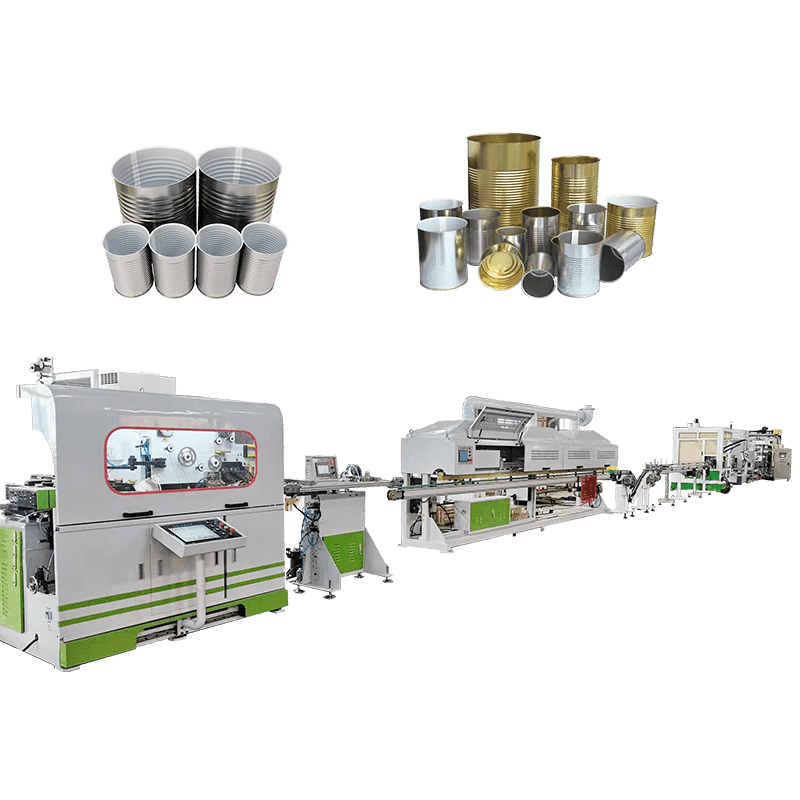The stamping process of Aerosol Tin Can Cone & Dome Production Line is an important link in production, which directly affects the quality, precision and performance of the product. Stamping is a process that processes metal materials into a specific shape through molds and mechanical pressure, and is mainly used for the initial forming of conical bottom covers and domes. During the entire forming process, the stamping quality is affected by many factors, including the characteristics of the material, the design of the mold, the parameters of the stamping machine, the operating environment, and the control of the process. The following will discuss in detail the impact of these key factors on the stamping process of the conical bottom cover and dome of the aerosol tin can.
1. Material properties
The physical properties of the material are the most basic influencing factors in the stamping process. The conical bottom cover and dome of the aerosol tin can are usually made of metal materials such as tinplate or aluminum. The thickness, ductility, hardness and surface finish of these materials will have a direct impact on the forming effect.
Material thickness: Too thick a material will increase the difficulty of stamping, resulting in insufficient mold pressure and incomplete forming during the stamping process. If the material is too thin, it may break or deform due to excessive pressure. It is very important to choose materials of appropriate thickness.
Ductility: Materials with better ductility can better adapt to changes in shape during stamping and avoid cracks or breakage. Materials with insufficient ductility are prone to stress concentration during stamping, resulting in breakage or uneven surface.
Surface finish: Smooth material surface helps reduce friction between the mold and the material and avoid scratches or wrinkles on the material surface.
2. Mold design
The mold is the core tool in the stamping process. The precision and structure of its design directly determine the molding quality of the product. The mold undertakes the shaping, cutting and trimming functions of metal materials in stamping. The design of the mold needs to take into account the shape, size and functional requirements of the product.
Mold accuracy: The accuracy of the mold directly affects the size and shape of the stamped parts. High-precision molds can ensure smooth edges and accurate sizes of the molded products. Insufficient mold accuracy may result in large dimensional errors, many edge burrs or irregular shapes of the finished products.
Mold life: Since stamping is a high-frequency and high-pressure process, the wear resistance and strength of the mold are also crucial. If the mold material is not strong enough or the design is unreasonable, the mold is easy to be damaged or deformed during the production process, thus affecting the molding effect of the product.
3. Stamping machine parameters
The performance and parameter settings of the stamping machine also have an important influence on the molding process. The pressure, speed, stroke and mold installation accuracy of the stamping machine will directly affect the stability of the stamping process and the quality of the product.
Stamping force: Stamping force is an important source of power to press the metal material into the mold. Insufficient stamping force will lead to incomplete material molding, while excessive pressure may cause material deformation or mold damage. Therefore, it is an important step to ensure the molding quality to reasonably adjust the stamping force to meet the requirements of different materials.
Stamping speed: Too fast stamping speed may cause the material to be unable to be fully molded in the mold, resulting in problems such as uneven stretching and surface wrinkling. Too slow speed may lead to low production efficiency. Therefore, it is necessary to adjust the stamping speed according to the characteristics of the material and the design of the mold to ensure the smooth progress of the molding process.
4. Process control
The process control of the stamping process is crucial to the quality of the final product. During the production process, the stability and consistency of the process can be controlled in many ways, such as temperature, lubrication, material delivery speed, etc.
Lubrication: During the stamping process, the use of lubricants can reduce the friction between the mold and the material, extend the life of the mold, and prevent scratches or wrinkles on the material surface. If the lubrication is improper or insufficient, the friction between the material and the mold will increase and affect the molding effect.
Temperature control: Although stamping is usually carried out at room temperature, in some special materials or processes, temperature changes may affect the ductility of the material and the performance of the mold. Maintaining a stable ambient temperature helps ensure the stability of the stamping process.

 English
English عربى
عربى русский
русский




